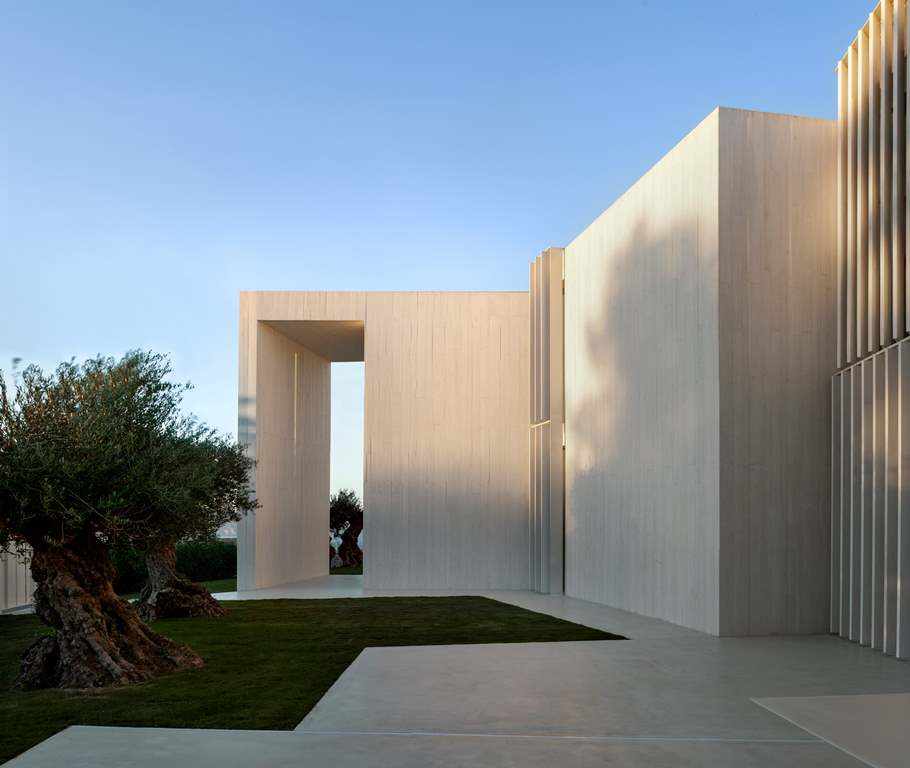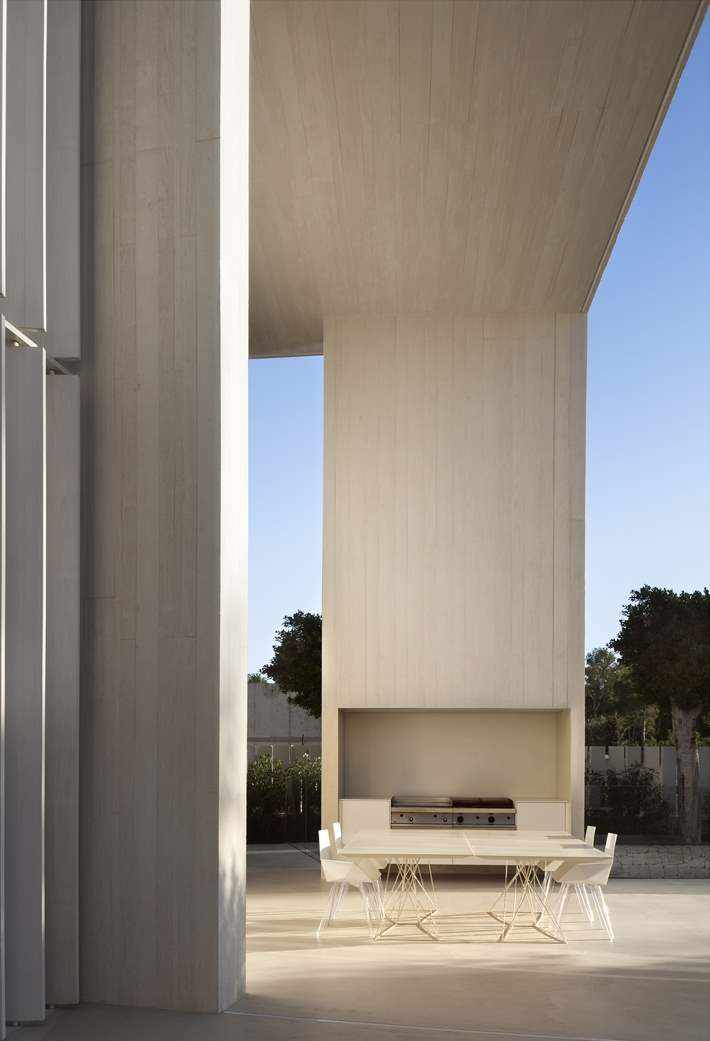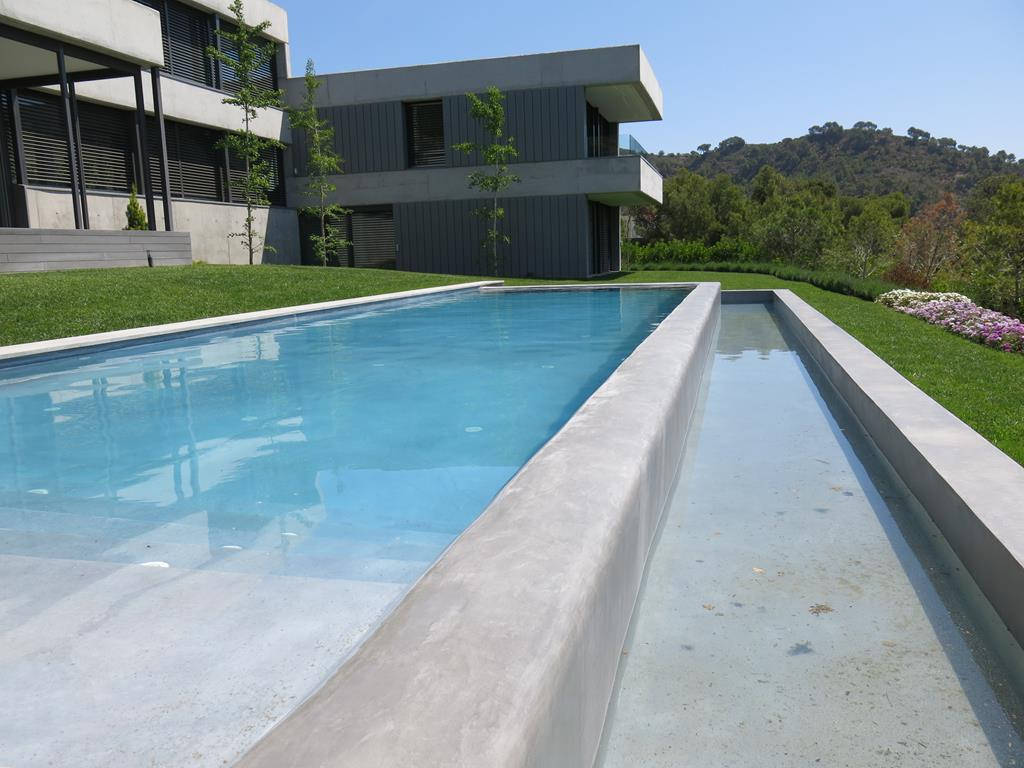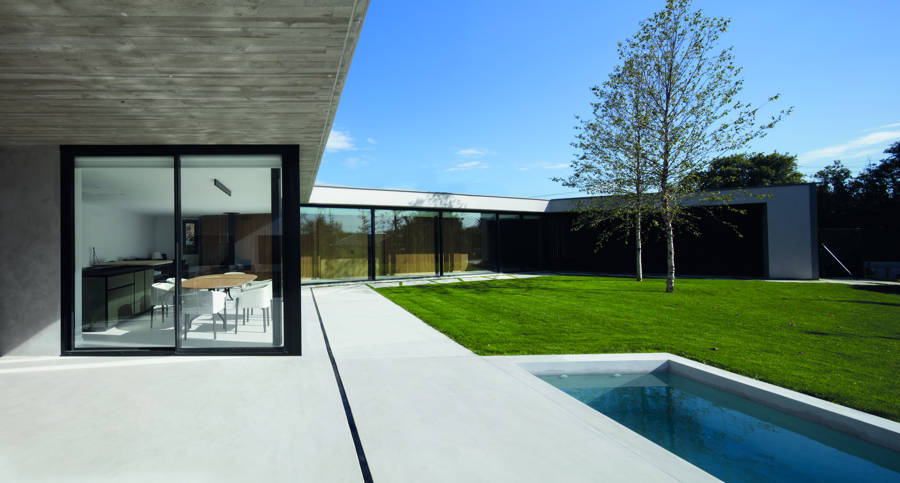Microcement in exteriors: floors that make a difference
Microcement in exteriors has become the decorative continuous paving of the moment. A coating increasingly present in the minds of architects and builders for its great advantages that have made it the great alternative for coating outdoor floors such as terraces, patios, porches, gardens, swimming pools and even walls and facades with microcement.
If you are one of those who until now thought that microcement was an exclusive coating for interior decoration, when you read this article your perception will change completely and for the better.
Here you will find everything you need to know about microcement for exteriors, an absolute decorative trend on the rise: advantages, price, application, finishes.... Take notes!

Why choose microcement for exteriors?
There are many reasons why it is a great idea to choose microcement for exteriors, whether as a coating for walls, façades, porches or as continuous outdoor paving, the latter being the preferred option of experts.
Whatever the case may be, applying microcement outdoors guarantees the creation of incredible atmospheres, as it forms a covering which has a magnificent adherence that allows it to be applied on the most diverse substrates and materials. A continuous decorative coating that combines a powerful visual aesthetic on the one hand, and on the other, functionality in capital letters.
Here are the six main advantages that have made microcement popular for outdoor use:
1. Microcement for exteriors provides continuity
Microcement is a continuous coating that is applied directly on the existing substrate. In other words, it does not need expansion joints. This is a great added value that allows microcement for exteriors to blend in perfectly with the rest of the architectural and decorative elements, providing a sensation of continuity and harmony between all the components. A continuity that can go one step further and serve as a link between the microcement for exteriors and the interior space of the home or premises.
2. Microcement for exteriors is very resistant to traffic
The high performance of microcement remains intact outdoors. This is the case of its resistance to traffic, the main factor that has led to microcement in exteriors gaining renown as an alternative to other coatings such as natural or artificial stone, tiles, concrete or gresite, among many others.
3. Rain and heat do not affect microcement in exteriors
Weather conditions are a determining factor in the choice by architects, decorators and other construction professionals of the materials to be used outdoors. Microcement, if a quality one is used and it is protected and sealed with the appropriate varnishes, will not be affected by rain and heat.

4. Microcement for exteriors has antiseptic properties
Thanks to its continuity, outdoor microcement prevents the growth of fungi, weeds or bacteria, thus obtaining an antiseptic space. In addition, it is a decorative coating that is very easy to clean and requires minimal maintenance and care.
5. Microcement exterior flooring is non-slip
The pursuit of materials that provide a non-slip finish on exterior coatings is a must. So you'll be glad to know that there are types of microcements (such as Sttandard Microstone, our microcement for exteriors) that have this ability and will make exterior continuous microcement flooring a completely slip-free space.
Another of the anti-slip microcements for exteriors is Atlanttic, our two-component microcement specifically for swimming pools. In fact, at Topciment we also have Topsealer WT Anti Slip, our water-based polyurethane varnish that makes outdoor surfaces coated with microcement slip-resistant.
6. Microcement for exteriors is very durable
Last but not least, if there is one peculiarity that perfectly defines outdoor microcement, it is its durability. It is a coating for walls and floors capable of maintaining its performance in optimum conditions despite the passage of time.
In this way, with microcement for exteriors, not only is a highly decorative, elegant and sophisticated finish achieved, but also a very durable coating, almost imperishable.
.jpg)
Ideas for using microcement in exteriors
Microcement can be used to perfection in many ways in outdoor spaces. Here are some of the best ideas for using microcement for exteriors thanks to its unlimited customisation of finishes and colours. Take notes!
Microcement for outdoor terraces
Microcement flooring is the most common use of microcement outdoors, especially on terraces. It is a coating capable of covering large areas such as terraces in a single piece, thus preventing the accumulation of dirt. But above all for the beauty of its finishes and the magnificent resistance to water and environmental humidity that microcement for exteriors presents.
Microcement for exterior façades
Walls and façades coated with microcement offer the same benefits as pavements. And if it is also combined with an exterior microcement floor, the feeling of spaciousness will be multiplied exponentially. The wide range of customisation makes it possible to obtain finishes ranging from more minimalist and industrial to rougher or rustic.
Microcement for outdoor swimming pools
When it comes to building a swimming pool, it is common to resort to building pools. With microcement pools, the same spectacular result can be achieved with the added advantage of not having to carry out costly building work. This time saving is directly proportional to the saving in labour costs.
Not to mention that outdoor microcement for swimming pools adapts perfectly to any type of space, even if your terrace is small or has complicated slopes.

How much does microcement for outdoors cost?
It may seem that the price of microcement outdoors is higher than indoors. However, this is completely wrong. The final cost of applying microcement for exteriors and interiors depends on the same factors: the state of the substrate (if it is damp, if it is not stable, if it needs to be repaired, etc.), the surface area in square metres to be coated and the difficulty of the work itself.
Only on one occasion is the price of outdoor microcement higher: in the case of swimming pools. Why? Because its application is much more complex and requires more expensive labour.
How to apply microcement in exteriors correctly
In order to apply microcement on exteriors without problems, a series of steps must be followed to the letter. Making mistakes in the process would mean a final finish very different from the desired and expected one. That is why it is so important to have a trained and experienced professional.
These are the six steps to apply microcement in exteriors:
1. Condition the substrate to be coated with microcement for exteriors. Check that it is in good condition and, if not, repair it.
2. Place the fibreglass mesh on the exterior microcement floor or wall, which will help to reinforce the future continuous decorative coating for exteriors.
3. Prime the exterior microcement coating with an adhesion promoter.
4. Apply two coats of microcement base for exteriors.
5. Apply two coats of exterior finishing microcement.
6. Seal the exterior microcement coating with a good varnish.

Application process of an exterior microcement floor
The application of an exterior microcement floor is always the same. The only thing you have to choose is the type of microcement you want , we recommend you Sttandard Microstone, and the colour.
In this case the application of an exterior microcement floor with Sttandard Microstone would be as follows:
1. Fibreglass mesh and primer on the future exterior microcement floor.
2. A layer of unpigmented Sttandard Microbase microcement.
3. Apply two coats of Sttandard Microstone, our finishing microcement for exterior floors, which are already pigmented.
4. Seal and protect the exterior microcement floor. First with two coats of our Presealer water-based acrylic varnish, then with another two coats of one of our polyurethane varnishes from the Topsealer family.
Application process of exterior microcement on walls
The application of exterior microcement on walls differs from that on floors. Instead of using Sttandard Microstone as a finishing microcement, any of the Microfino microcements should be used: Sttandard Microfino (two-component), Evoluttion Microfino (one-component) or Efectto Quartz Small Grain (ready-to-use microcement).
In addition, unlike exterior microcement floors where a single layer of microcement base was used, a double layer will be necessary to apply exterior microcement on walls.
Process of applying exterior microcement to swimming pools
The non-slip and waterproof nature of microcement pools, as well as their resistance to the effects of the sun, make it one of the most intelligent uses for exterior microcement. As mentioned above, its application is somewhat more complex.
Atlanttic, our exterior microcement system for swimming pools is applied in the following way:
1. Before applying the exterior microcement for swimming pools, a layer of resin will be necessary. We have developed Acricem.
2. Two coats of Atlanttic Aquaciment XL microcement base, the first one unpigmented and the second one already pigmented.
3. Two coats of Atlanttic Aquaciment M, our finishing microcement for swimming pools.
4. Finally, seal the exterior microcement in swimming pools with two coats of Presealer, which will waterproof the substrate.
Subscribe to our newsletter
Receive in your email tips for the application and care of microcement, the latest trends and news about Topciment products.




